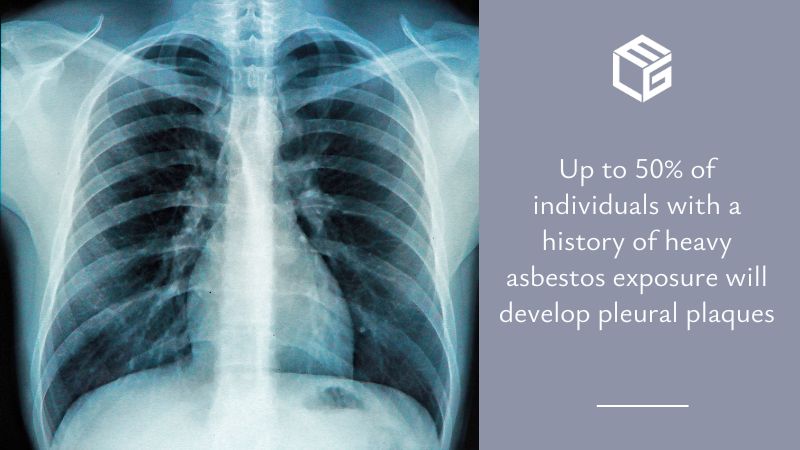Nearly 50% of the people exposed to asbestos will develop pleural plaques
When the accumulation of asbestos fibers in the lungs causes severe irritation, pleural plaques may form. The average period of time during which this lung condition develops is 40 years. People who suffer from pleural plaques rarely experience distressing symptoms. Even though the risk of being diagnosed with mesothelioma or lung cancer is relatively low after the occurrence of pleural plaques, it is recommended to undergo regular screenings, as a malignant disease may develop with this condition in certain cases.
The risk of developing pleural plaques increases with the duration of asbestos exposure. While pleural plaques are not usually accompanied by any signs, it is crucial to notify your physician immediately if you start experiencing one or more of the following symptoms, as they may indicate the onset of a more serious disease:
- chest pain
- coughing up blood
- shortness of breath
- a persistent cough
There are multiple portions of the lungs where pleural plaques can form, depending on where the inhaled asbestos fibers have mostly accumulated. Often developing on the parietal pleura, the layer of tissue inside the ribcage, they can also occur on the visceral pleura, which covers the lungs. The diaphragm can be affected by this condition, too. According to medical studies, asbestos fibers reach the pleural space via the lymphatic system. Over time, pleural plaques may calcify, but they rarely cause serious breathing problems. Calcification takes place in approximately 20% of people who suffer from pleural plaques.
If a person with a history of occupational asbestos exposure and a diagnosis of pleural plaques experiences bothersome symptoms such as chest pain or shortness of breath, they are very likely to have developed a second, more serious lung disease.
